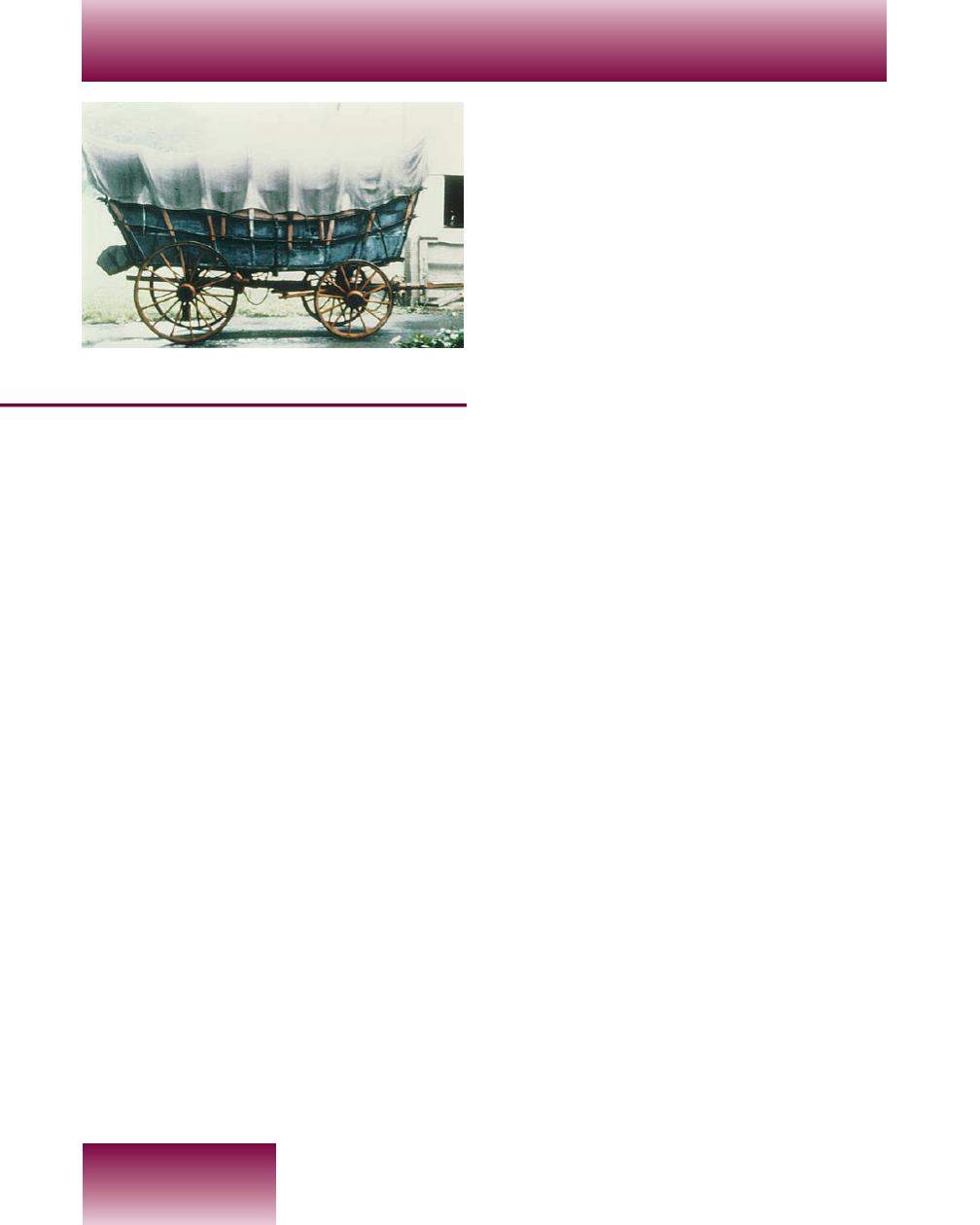
112
●
Chapter 7
at a gate. In those days, the gate was called
apike. After paying the toll, travelerswould
be allowed to continue by turning the pike.
Farmers had to pay a toll for each animal
using the road. That is how the word
turnpike
got its name.
Later, a stone road was built across the
Allegheny Mountains to
Pittsburgh
. By
1820, this entire road was hard surface.
Travel and tradewere carriedonall year long.
However, in the early 1800s, most turnpikes
werenothingmore than crudedirt roads that
were cleared of tree stumps and large rocks.
By 1832, Pennsylvania had 3,000 miles of
turnpikes, more than any other state!
The Canal Story
A
nother type of transportation
system made it possible to move
goods and people at less cost and
faster thanbyhorsebackorwagon. Business
people thought that boats traveling on a
system of
canals
would be a cheaper way
tomove things fromplace toplace. A canal
is a waterway dug across land for small
boats togo through. Thiswouldmeanmore
trade andmore profits!
As one historian stated, Pennsylvania
caught “Canal Fever.” From 1828 to 1858,
the state of Pennsylvania spent over
$100,000,000 building canals. In those
days, this was a huge amount of money.
The state nearly ran out of money. By the
1850s, Pennsylvania had more miles of
canals than any other state!
Many canals were opened around
Pennsylvania. The farm products and trade
goods, such as iron from the West, could be
sent to eastern cities and towns. Products
needed from the east couldbe sentwest. Coal
and lumber could be transported from the
rural regions. Thismade for good business.
The most famous canal was the
Pennsylvania
Main Line Canal
. Between
the years 1835 and 1857, thousands of
people and tons of goods traveled between
Philadelphia
and
Pittsburgh
. Of course,
you had to pay to travel or send goods on
the canal.
The Main Line Canal was not entirely a
waterway. In two parts, totalling 118miles, it
was not possible to build a canal. This
distance had to be covered over land. So
engineers decided to build a railroad. From
Philadelphia to Columbia, a canal boat
traveledpiggyback on railroad flatcars. Horses
were used to pull the flatcars. At Columbia, a
flatcarwas rolleddown a ramp into the canal.
Once the boat was in the water, horses
walking alongside the canal pulled the boat
forward. The canal followed the Susquehanna
and Juniata Rivers until it reached
Hollidaysburg
in central Pennsylvania.
At Hollidaysburg, the boats reached the
The ConestogaWagon could carry up to
10,000 pounds of goods.


